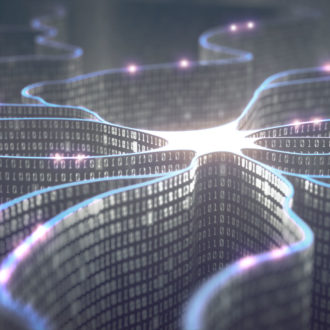Risto Siilasmaa is the chairman of the board of directors of Nokia Corporation and an entrepreneur at heart. In addition to leading Nokia’s recent transformation, he is founder and chairman of the board of cybersecurity company F-Secure. He’s also known as a business angel who has invested in a number of tech startups. Here’s his story:
“I was fascinated by artificial intelligence during the end of the 1980s and spent numerous hours working on Natural Language Processing challenges using a weird and wonderful programming language called Lisp. The effort didn’t really amount to much, but at least I could claim, forever after, that I had worked in the hallowed field of artificial intelligence (AI).
In 2006, the cybersecurity company I founded back in 1988 started using neural networks to identify malicious applications. Though F-Secure didn’t immediately enjoy much success with it – as often happens when you’re just a little bit too early with a new technology – it was my second brush with AI and my first with machine learning.
Third time lucky? The current renaissance with machine learning took off around 2012, and I continued to feed my fascination with the promise of intelligent machines through books and meetings with researchers on the topic. As chairman of Nokia, I was fortunate to be able to worm my way into the calendars of the movers and shakers of the AI world. I only understood bits and pieces, and initially believed the topic was so difficult that it would take ages to truly comprehend. But I also became frustrated with my discussion partners, some of whom seemed more intent on showing off their own advanced understanding of the topic than explaining what they knew in plain, comprehensible language.
So, I spent some time complaining. Where could I find good material explaining how machine learning works in terms that would speak to anyone who loves to understand how things work?
Then I remembered what being an entrepreneur meant. An entrepreneurial mind does not just complain to others, but always considers fixing the issue oneself. As a longtime CEO and chairman, I’ve gotten used to having things explained to me. Somebody else does the hard work and I can focus on figuring out the right questions.
Sometimes CEOs and chairmen may feel that understanding technology is in some way beneath their role, that it’s enough for them to focus on things like “creating shareholder value.” Alternatively, they may feel that they can’t learn something seemingly complicated and therefore don’t consider trying. Neither one is the entrepreneurial way.
So I thought: Why not study machine learning myself and then explain what I learned to others who are struggling with the same questions? With a quick internet search I found Andrew Ng’s courses on Coursera. I started with Machine Learning and had a lot of fun getting reacquainted with programming. Andrew turned out to be a great teacher who genuinely wants people to learn.
Fun aside, it didn’t take long before I was able to appreciate both the shortcomings and the strengths of the current state of machine learning. It turned out to be both much less than I had expected, but at the same time, in many applications, more powerful and much more fascinating than I had dared hope.
Over time I gained enough understanding to explain what I felt were the most important aspects of machine learning to CEOs, politicians, academics (in other fields) and, frankly, any decision makers. Inspired by Andrew Ng, I wanted to provide them with intuition on, for instance, why machine learning is so topical right now and why it is dangerous to ignore machine learning.”
Five points about machine learning
|
By Risto Siilasmaa, ThisisFINLAND Magazine 2019







